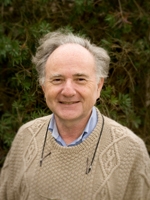Bowerbird research in the Top 100
Research news
Professor John Endler from Deakin University's Centre for Integrative Ecology) was in the charts recently, with his research into male bowerbirds using visual perspective featuring at number 86 on Discover magazine’s list of Top 100 stories for 2010.
“I was completely delighted by the news,” Professor Endler said.
Described as a “special report on the 100 most amazing discoveries from the past year”, the feature appeared in the January/February 2011 issue of the magazine.
The study by Professor Endler and his colleagues put forward the theory that male bowerbirds deliberately decorate their bowers to make themselves or their ornaments look larger or more conspicuous to females. The discovery makes bowerbirds the only animal known - in addition to humans - to create a scene with altered visual perspective, and one constructed for viewing at a particular angle. Their findings were published in Current Biology last year.
The research received international media coverage, with a number of interviews being done while Professor Endler was working in the field.
“It was a bit of a challenge for journalists to catch up with me, because my mobile phone would only work in some locations. But it’s a good thing to see people taking an interest in research and talking about science,” Professor Endler said.
“To illustrate what the bowerbirds are doing some articles described Michelangelo’s use of perspective in his Statue of David and I like the analogy. Depending on your definition of art, it raises the question: Given that Great Bowerbirds create scenes with forced perspective, is what they produce art?”
Professor Endler and his colleagues are now conducting further tests to see if the bowerbird’s visual tricks are related to success with mating.
Share this story
 Professor John Endler
Professor John Endler
